Harvesting a private woodlot
Darrin Collett, New Zealand Tree Grower May 2014.
This article focuses on harvesting and marketing a woodlot at Kaukapakapa, north of Auckland. During my 23 years of experience in forestry I have found that harvesting and marketing private woodlots and forests is not only a unique task, but one that can be challenging and at times, very frustrating. I have never previously considered writing about this sector of the forestry industry, but felt compelled to do so after our experience working on the Barker family woodlot last summer.
The woodlot
I was initially contacted by Tony and Chree Barker’s son John. I had met him a few years earlier when my company carried out some harvesting work in an East Coast forest on behalf of the forestry investment company John worked for at the time. John took me to the woodlot at the start of the summer in 2012. On the way he told me about the history of the block and how he had spent many hours, from the age of seven onwards, working with the rest of the family to plant, release and prune the trees. I was surprised when we finally reached the block to see a picturesque forest woodlot, with a park-like understory of lush grass under a thick forest canopy. There were also pockets of native bush and a delightful small stream.
The tree crop itself was interesting. The large pruned trees had massive branches above the pruned bottom log. The wide spacing regime had been aimed at producing large knot-free bottom logs as peelers, which was the most valuable timber product at the time the project was started in 1984. It was a very visual experience, but not a fantastic tree crop for today’s changed market. It was a relief to find that the clients had forestry knowledge and agreed with my assessment of the poor quality of the logs above the pruned sections.
The contract
Once I had completed my due diligence and given the Barkers my findings, we entered a formal contract and agreed to my company harvesting and marketing the trees in late summer 2013. I had some specific rules to follow, given that the woodlot was situated in the Auckland Council Region. The Auckland Council is well known for having the most stringent forest harvesting and forestry earthworks rules in the country.
Tony and Chree also had some specific requirements for the harvesting process −
- A summer harvest on dry ground to minimise soil disturbance
- Protection of the areas of native bush and other species not being harvested
- Protection of the stream and surrounding areas
- A harvest plan which would leave the property tidy
- Each heap of waste to be small enough to burn in one day, rather than being left to burn unattended
- Keep the neighbours informed and manage a dangerous entry from the property on to the road
- Maximise the return
Woodbank was engaged to harvest and market the trees on an open book agreement. This is as simple as it sounds. Woodbank submitted a forecast of the project costs and expected market prices for the whole harvest project. A more formal monthly forecast, expected returns and sale prices was provided as we moved through the project. At the end of each month Woodbank submitted all data relating to the harvest and all invoices that had been created.
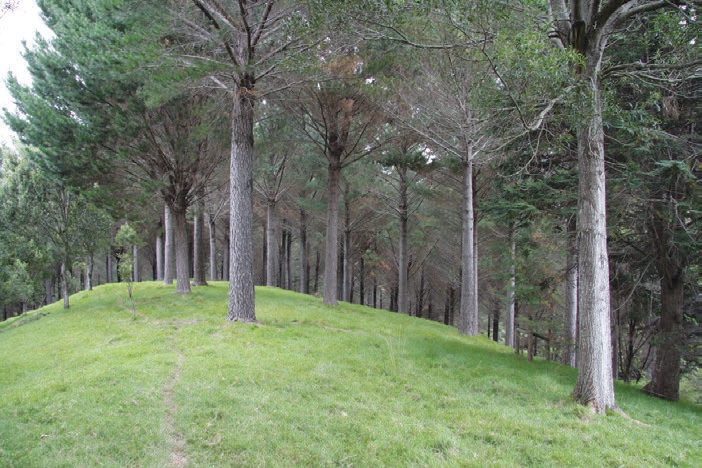
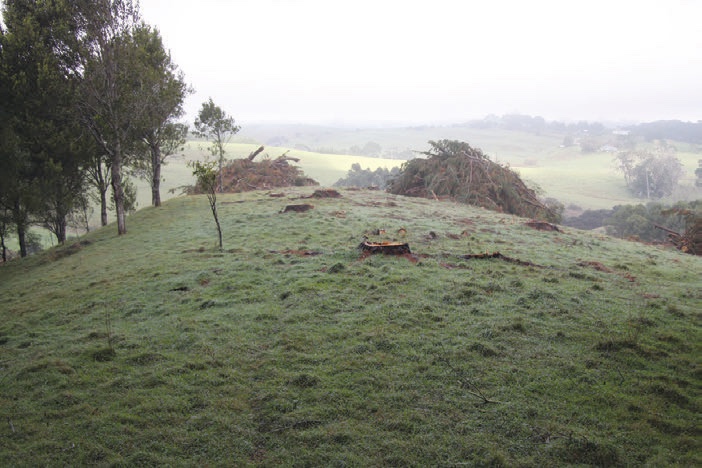
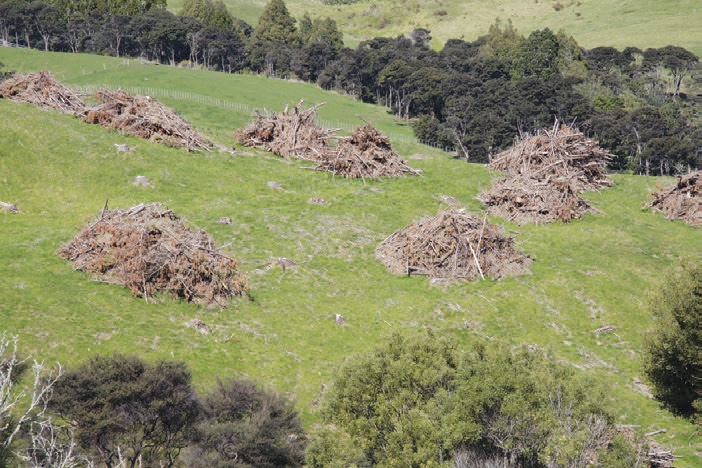
Harvesting
The starting date was put back due to a delay in machinery replacement at a previous contract and so was not started until early April 2013. The initial very dry conditions due to the Auckland drought quickly changed when there was more than double the average rainfall until completion of harvesting in early June. This presented a challenge when operating machinery and logging trucks over the heavy clay soils. Constant council monitoring and potential fines, together with pride in our own work, motivating us to treat the property with care. The internal roads, previously hard and dry, had to be reformed and metalled. Fortunately, the delay also matched an upswing in the log market, which mitigated the cost of road upgrading.
Permitted rules
The Auckland Council agreed that the block could be harvested under the permitted activity rules, which are sometimes more onerous than a resource consent. Given the concern of the client for a tidy job and the terrain, I contracted Oceans Logging to harvest the block. They are a small logging crew who work mainly in the Auckland region and are an outstanding and experienced three man team.
The crew is run by Tom Sturm, who had nearly 40 years of harvesting experience in the Rotorua district before being lured north by the snapper fishing and the absence of early morning frosts. A number of forest owners around the district will attest to Tom’s skill. Tom’s son Colin works for his father and has 10 years of experience under his father’s guidance. The third member of the crew was Joe Harris, a 30-year veteran of the industry, who has now retired to the Far North.
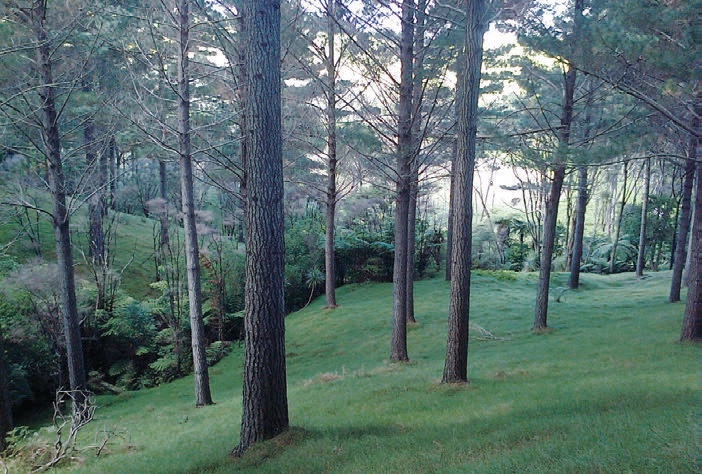
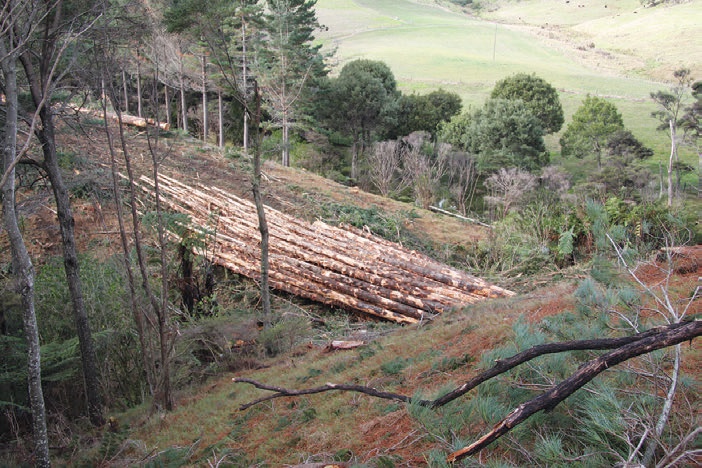
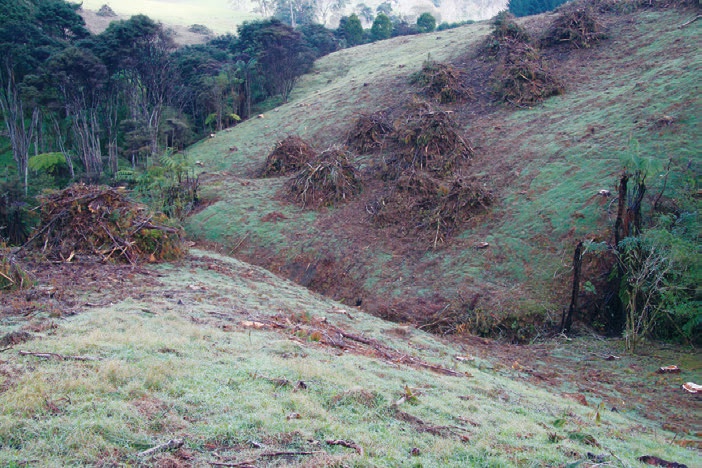
Match team to the site
Selecting the appropriate logging team for a specific site is important. Far too often an unsuitable logging crew is mismatched with the forest block resulting in inefficiencies and in the worst case, a mess. The skill of the Ocean’s Logging crew allowed them to fulfil all of the client’s requirements, as listed above. As an example, one part of the woodlot was difficult to access across a stream with steep entry and exit points. A bed of slash and a well-constructed temporary log bridge protected the stream bed.
The Auckland Council carried out regular environmental monitoring and inspected this part of the operation three times. You know that you have completed the job to a high standard when an inspector takes photographs for training purposes. Tom Sturm shovelled nearly 1,000 tonnes of full tree stems over this crossing to the skid site and after the log bridge was removed and the slash stacked, there was little indication that an excavator had travelled over the ground. Within three months,grass growth had covered all evidence that the stream had been crossed.
One of the prime requirements was that the land be left tidy and the photographs illustrate the high standard achieved. The large trees had heavy and dense branching above the pruned bottom log, which actually made it easier to pick up the slash and pile it than it would have been had the branches had been smaller. This tidy-up added to the overall logging cost, but it was an efficient use of the excavator to do this for short periods while waiting for work at the skid sites or to load trucks, when it would otherwise have stood idle. It was much cheaper than doing it as a separate contract.
Tony and Chree just had to burn the small heaps in the following autumn to complete restoration of the land to pasture. The Auckland Council monitoring service gave its highest approval rating for the well placed slash piles and erosion control of a stabilised site.
Logging returns
Oceans Logging harvested 4,348 tonnes of logs from the woodlot, which was close to the initial estimate of 4,469 tonnes. Given that the logs were large and highly tapered, the conversion from export measurement of JAS cubic metres to tonnes was one of the lowest I have seen. Even the large pruned logs had poor conversion.
Due to the growing and silviculture regime, the logs were not suitable for the domestic market, which would have minimised the conversion risk. However, the project coincided with a lift in log prices and I managed to obtain sale prices for the pruned logs in excess of $150 a cubic metre at Marsden Point wharf.
The clients
The Barkers obviously took a lot of interest in the final stage of their family project, with frequent visits and many more photographs of the harvesting process. They developed a close relationship with the logging crew, usually timing their visits to coincide with smoko so that Chree could provide them with some home baking. Their obvious appreciation of the quality of the work being done encouraged the crew, who in turn still comment on the kindness of the Barkers.
Whenever I drive past this property I reflect on how pleasant it was to be involved with knowledgeable clients and being able to work together on a plan which dictated a high standard of workmanship. As a forester at heart, I never enjoy seeing forests revert to pasture, but I feel immense pride in having played a part in this ambitious family project.
Darrin Collett is the Director of Woodbank Ltd, a private forestry company specialising in harvesting and marketing third party woodlots and privately owned forests.
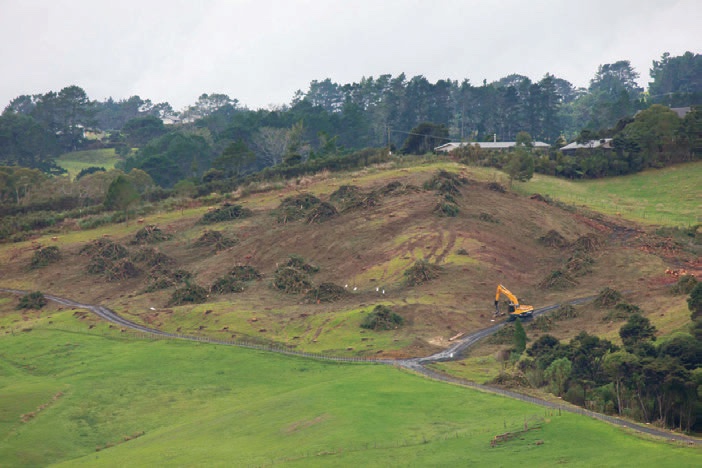
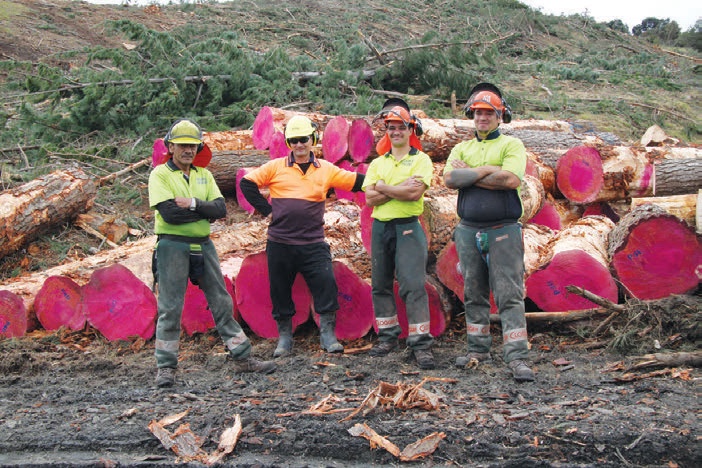

 Farm Forestry New Zealand
Farm Forestry New Zealand

